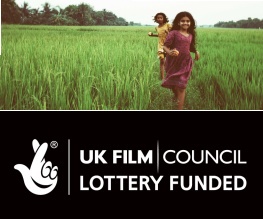Village at the End of the World

The Village of Niaqornat really is at the end of the world. We are first introduced to it from a bird’s eye view: just a tiny cluster of houses, minuscule and vulnerable against the vast expanse of land and ocean. These few coloured wooden huts are the only ones from miles around, and if any one of the 59 inhabitants wants to leave, weather permitting, they have to take a helicopter. This village is also nearing the end of its world. There is a strange sense of Armageddon in this film, that inter-cuts the otherwise idyllic beauty and calmness. The ice is melting, the fast dwindling population is in danger of losing the government subsidies for the much needed supply ship and the fish factory, which was many people’s livelihoods, has recently closed. The Village at the End of the World focuses on the villagers’ response to these crises and their determination to pull together to save Niaqornat.
Gavron chooses to focuses on four of Niaqornat’s inhabitants. Ann, the oldest lady in the village, provides a window to the past, telling stories of ghosts screeching in the water and the introduction of electricity in 1988. The heroic Karl is the mayor and the most respected hunter in the region – he too represents tradition, believing that the spirit of his forefathers guides him while he is hunting. Karl gallantly leads the mission to re-open the fish factory, which will save the village, allowing it to be self reliant again. Ilannguaq provides much of the comedy in the film, he moved to Niaqornat for love after meeting a villager on the internet. He jokingly refers to his job as “shit-shoveling” as he collects the bucket toilets from each home every day. But he proudly represents the routine of the village: “They call me ‘the clock’,” he declares, “without me, the village doesn’t run.”
The most intriguing character is Lars, who sums up the frustration and loneliness of living in the village, as well as how the villagers have adapted to the 21st century. As one of the only teenagers, he states that “it’s lonely being a teenager here, there are no Internet Cafes, no bars, just a shop.” This boredom is reiterated when a young child responds to the question “what do you want to be when you grow up?”: “work in shop, because we might have a busy day and I might get to use the till”. Lars relies on the internet for a social life, regularly communicating with his 200 friends on Facebook. Interestingly, when the scenery can seem quite alien, Lars is often standing in the foreground looking like a stereotypical teenager: all track suits, sunglasses and cigarettes. Lars is an intriguing merging of old and new: in one scene, while learning the traditional methods of cutting off whale blubber, Lars is distracted by McFly on his iPod while wearing a T. Shirt which says: “Will fuck on the first date”. But Lars doesn’t want to stick around and hunt like his forefathers when there are no girls his age in the village! So he sets out to plan his escape…
The Village at the End of the World does not aim to give a novelty-driven or touristic representation of Niaquornat; instead there is a sense that we are being shown the humanity underlying its uniqueness. When a load of Dutch tourists visit to gawp and take photos, we are shown this from the perspective of the villagers – who have to put on a bit of a show for the tourists, taking them on a tour in traditional dress. One tourist gives a speech about how the village is untouched by the modern world – but Gavron inter-cuts this with the reality: villagers dressed in contemporary sportswear, on their laptops. Many of the villagers aren’t preoccupied with tradition at all. Lars’ family is distinctly non-nuclear, his mum, who he calls his ‘best friend’, is not much older than himself and he is unsure who his dad is – though he thinks, and hopes, that it’s Karl. The insight into this family dynamic is one of the many highlights of the film.
As Greenland’s melting sheet ice affects the rest of the planet, The Village at the End of the World is undeniably a global story. However, you should also watch this documentary for the personal, honest depiction of life in a small town, and for its interesting and funny characters. The Village at the End of the World is a beautifully shot, insightful and simple documentary which, despite the fact that it’s quite slow, remains enthralling throughout.







Recent Comments